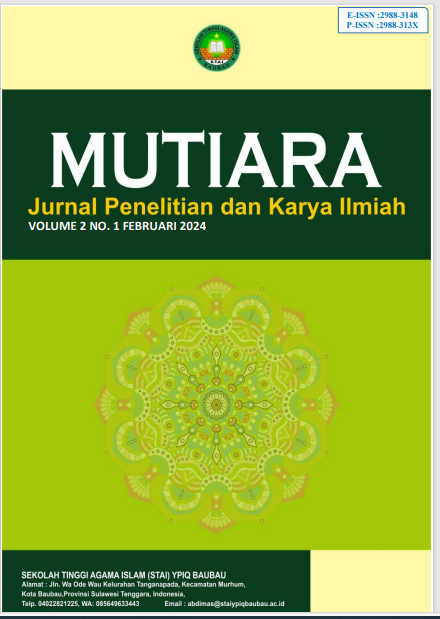Prekonomian Islam Pada Masa Peradaban Rasulullah SAW
DOI:
https://doi.org/10.59059/mutiara.v2i1.945Keywords:
Islamic economic, policyAbstract
The purpose of this article is to understand the thinking of an Islamic economic system based on Islamic values based on the Holy Koran and Hadith. The aim of implementing sharia economics is to create a civil society. The Prophet Muhammad made the economic system an example for all mankind in various fields of life to bring goodness to all mankind. Before the Islamic era, the Prophet Muhammad SAW served as a leader and messenger of Allah who changed the country's economic and financial system based on the Koran and Hadith. Apart from that, the Prophet Muhammad SAW was the first implementer of Islamic economic policy.
References
Huda Nurul, Ekonomi Pembangunan Islam, (Jakarta: Kencana, 2017).
Bedong Rusdi Ali M, Seminar Nasional Institut Agama Islam Negeri Parepare Respon Peradaban Terhadap Pemilu (Parepare: IAIN Parepare Nusantara Press, 2019).
Medias Fahmi, SEI., MSI, Ekonomi Mikro Islam, Magelang, Universitas Muhammadiyah Magelang, 2018.
Saifullah Edyson, Perkembangan Ekonomi Pada Masa Pemerintahan Rasulullah SAW, Jurnal Perbankan Syariah, Vol. edisi ke-2 1 2016.
Dr Amalia Euis M.Ag, Sejarah Pemikiran Ekonomi Islam, Cet I, Depok, Tata Bahasa Eldonado,
Ibnudin, Kehidupan Islam Nabi Muhammad, Indramayu, SMA Wiralodra,
Murtadho Ali, Konsep Fiskal Islam dalam Perspektif Sejarah, Jurnal IAIN Walisongo Semarang, Vol.IV Red. 1. Mayor








